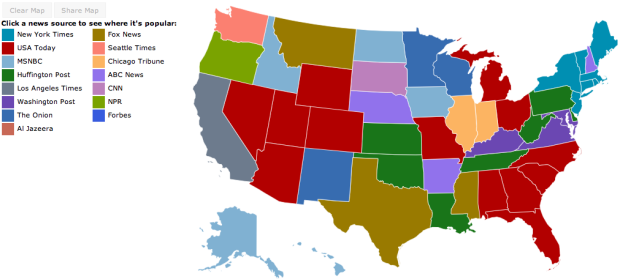I get kind of giddy whenever I see a tweet from Martin Wattenberg and Fernanda Viegas. They rarely tweet, but when they do it’s usually because they’ve released a new project and they always announce it simultaneously. Their latest piece shows live wind patterns, based on data from the National Digital Forecast Database. It’s beautiful to look at.
The most impressive bit is that, despite all of the animation, it’s interactive. Roll over flows for wind speed and direction as well as zoom (with a double click) and pan to your area of interest.







 Visualize This: The FlowingData Guide to Design, Visualization, and Statistics (2nd Edition)
Visualize This: The FlowingData Guide to Design, Visualization, and Statistics (2nd Edition)










